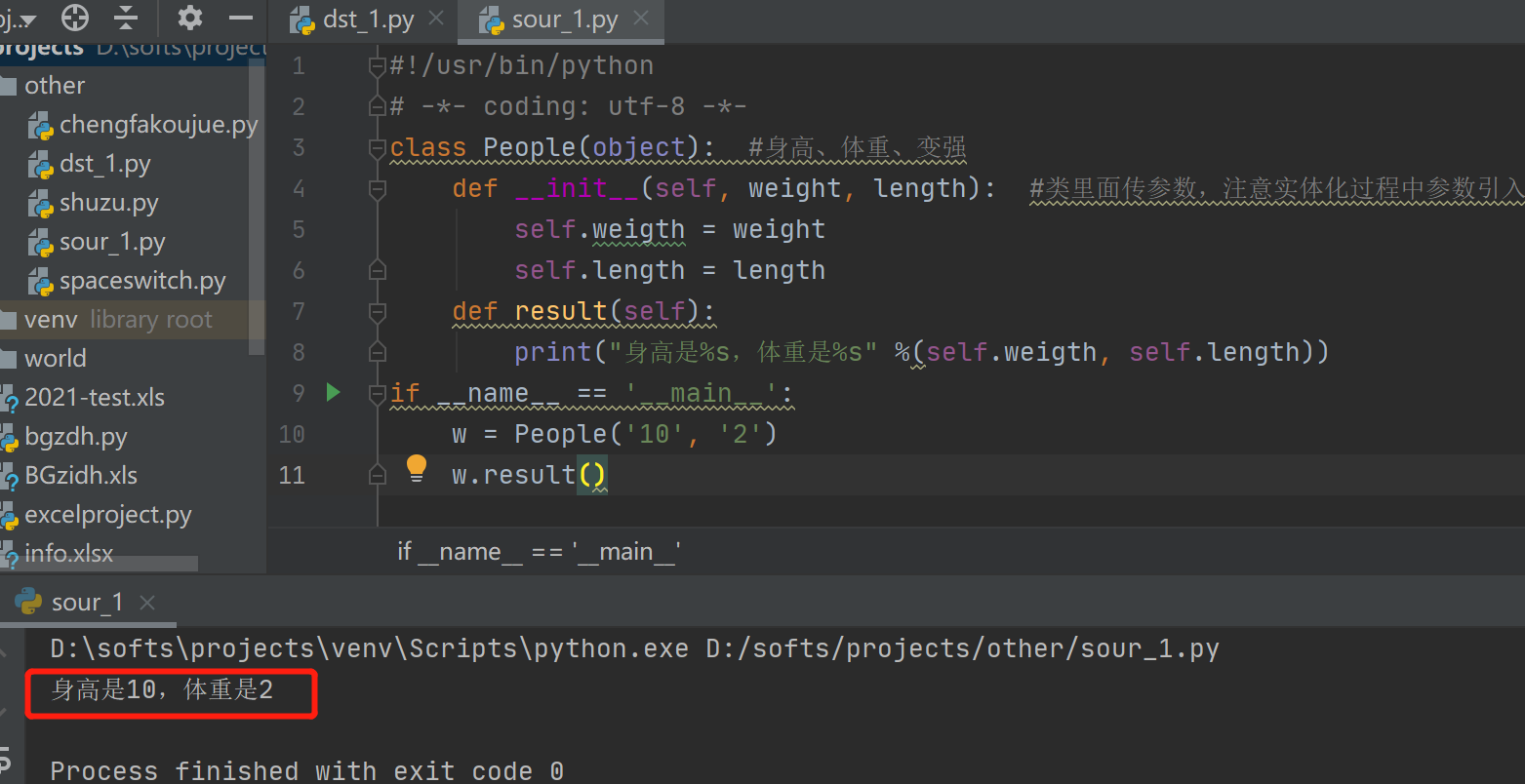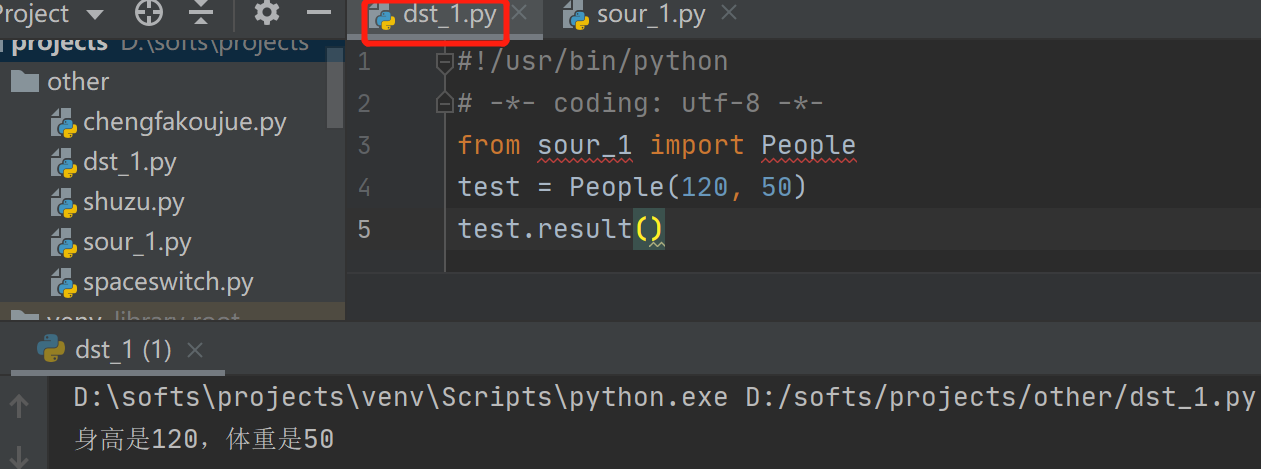1、最基础的类使用方法
#!/usr/bin/python
# -*- coding: utf-8 -*-
class People(object): #身高、体重、变强
def __init__(self):
self.weigth = 0
self.length = 0
def add_height(self, high):
print(‘Add height: ‘, high)
self.height = high
def add_weigth(self, weigth):
self.weigth = weigth
print(‘Add weigth: ‘, self.weigth)
def start_strong(self):
print(‘Start strong...‘)
if __name__ == ‘__main__‘:
w = People()
w.add_height(10)
w.add_weigth(2)
w.start_strong()
以上类主要用于学习class入门框架。
2、类参数传递使用
class People(object): #身高、体重、变强
def __init__(self, weight, length): #类里面传参数,注意实例化过程中参数引入
self.weigth = weight
self.length = length
def result(self):
print("身高是%s,体重是%s" %(self.weigth, self.length))
if __name__ == ‘__main__‘:
w = People(‘10‘, ‘2‘)
w.result()

3、自定义class之间调用
源文件名sour_1.py,目标文件名dst_1.py,都在同一个目录下。
sour_1.py
class People(object): #身高、体重、变强
def __init__(self, weight, length): #类里面传参数,注意实体化过程中参数引入
self.weigth = weight
self.length = length
def result(self):
print("身高是%s,体重是%s" %(self.weigth, self.length))
目标dst_1.py内容如下,
from sour_1 import People
test = People(120, 50)
test.result()

掌握以上基础,足以应对日常基础类入门Python脚本工作。
原文:https://www.cnblogs.com/sunnyyangwang/p/14693382.html